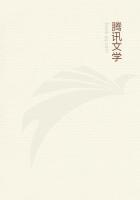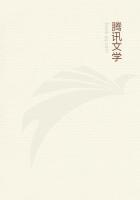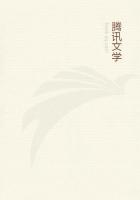We proceeded upwards,by a slow pace,through reeds,thickets,and a thousand other obstacles,which impeded our progress,over coarse sandy ground,which had been recently inundated,though full forty feet above the present level of the river.Traces of the natives appeared at every step,sometimes in their hunting-huts,which consist of nothing more than a large piece of bark,bent in the middle,and open at both ends,exactly resembling two cards,set up to form an acute angle;sometimes in marks on trees which they had climbed;or in squirrel-traps;or,which surprised us more,from being new,in decoys for the purpose of ensnaring birds.
These are formed of underwood and reeds,long and narrow,shaped like a mound raised over a grave;with a small aperture at one end for admission of the prey;and a grate made of sticks at the other:the bird enters at the aperture,seeing before him the light of the grate,between the bars of which,he vainly endeavours to thrust himself,until taken.Most of these decoys were full of feathers,chiefly those of quails,which shewed their utility.We also met with two old damaged canoes hauled up on the beach,which differed in no wise from those found on the sea coast.
[A squirrel-trap is a cavity of considerable depth,formed by art,in the body of a tree.When the Indians in their hunting parties set fire to the surrounding country (which is a very common custom)the squirrels,opossums,and other animals,who live in trees,flee for refuge into these holes,whence they are easily dislodged and taken.The natives always pitch on a part of a tree for this purpose,which has been perforated by a worm,which indicates that the wood is in an unsound state,and will readily yield to their efforts.If the rudeness and imperfection of the tools with which they work be considered,it must be confessed to be an operation of great toil and difficulty.]
Having remained out three days,we returned to our quarters at Rose-hill,with the pleasing intelligence of our discovery.The country we had passed through we found tolerably plain,and little encumbered with underwood,except near the river side.It is entirely covered with the same sorts of trees as grow near Sydney;and in some places grass springs up luxuriantly;
other places are quite bare of it.The soil is various:in many parts a stiff and clay,covered with small pebbles;in other places,of a soft loamy nature:but invariably,in every part near the river,it is a coarse sterile sand.Our observations on it (particularly mine,from carrying the compass by which we steered)were not so numerous as might have been wished.But,certainly,if the qualities of it be such as to deserve future cultivation,no impediment of surface,but that of cutting down and burning the trees,exists,to prevent its being tilled.
To this river the governor gave the name of Nepean.The distance of the part of the river which we first hit upon from the sea coast,is about 39miles,in a direct line almost due west.
A survey of Botany Bay took place in September.I was of the party,with several others officers.We continued nine days in the bay,during which time,the relative position of every part of it,to the extent of more than thirty miles,following the windings of the shore,was ascertained,and laid down on paper,by captain Hunter.
So complete an opportunity of forming a judgment,enables me to speak decisively of a place,which has often engaged conversation and excited reflection.Variety of opinions here disappeared.I shall,therefore,transcribe literally what I wrote in my journal,on my return from the expedition."We were unanimously of opinion,that had not the nautical part of Mr.Cook's deion,in which we include the latitude and longitude of the bay,been so accurately laid down,there would exist the utmost reason to believe,that those who have described the contiguous country,had never seen it.On the sides of the harbour,a line of sea coast more than thirty miles long,we did not find 200acres which could be cultivated."
September,1789.But all our attention was not directed to explore inlets,and toll for discovery.Our internal tranquillity was still more important.
To repress the inroads of depredation;and to secure to honest industry the reward of its labour,had become matter of the most serious consideration;
hardly a night passing without the commission of robbery.Many expedients were devised;and the governor at length determined to select from the convicts,a certain number of persons,who were meant to be of the fairest character,for the purpose of being formed into a nightly-watch,for the preservation of public and private property,under the following regulations,which,as the first system of police in a colony,so peculiarly constituted as ours,may perhaps prove not uninteresting.
I.A night-watch,consisting of 12persons,divided into four parties,is appointed,and fully authorized to patrol at all hours in the night;
And to visit such places as may be deemed necessary,for the discovery of any felony,trespass,or misdemeanor;and for the apprehending and securing for examination,any person or persons who may appear to them concerned therein,either by entrance into any suspected hut or dwelling,or by such other measure as may seem to them expedient.
II.Those parts in which the convicts reside are to be divided and numbered,in the following manner.The convict huts on the eastern side of the stream,and the public farm,are to be the first division.Those at the brick-kilns,and the detached parties in the different private farms in that district,are to be the second division.Those on the western side of the stream,as far as the line which separates the district of the women from the men,to be the third division.The huts occupied from that line to the hospital,and from there to the observatory,to be the fourth division.














